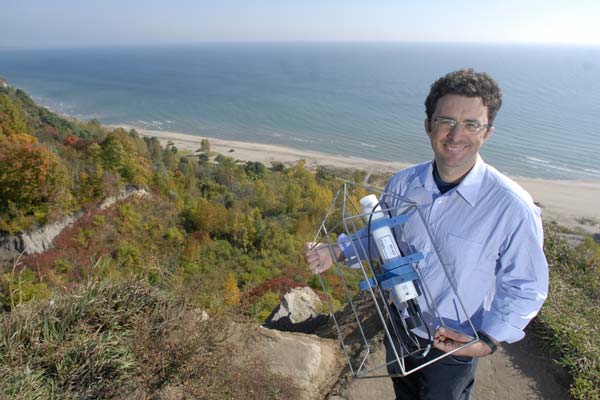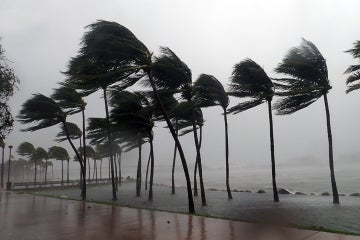
Is Toronto Harbour too cold for fish?
Published: March 21, 2013
University of Toronto Scarborough professor Mathew Wells has a passion for water. He’s fascinated by how it flows and how other things move and disperse within it.
While his field work has taken him across the globe to study the various oceans of the world, his more recent work has focused on the Great Lakes. Now Wells and graduate student Bogdan Hlevca are teaming up with researchers from Carleton University and the Federal Department of Fisheries and Oceans to study fish movements and habitat use in Toronto Harbour. It’s the largest fish tagging project ever undertaken in the Great Lakes and will be instrumental in laying the important scientific groundwork before millions of dollars are poured into fish habitat restoration in the coming years.
Wells spoke with writer Don Campell about his research and why Lake Ontario remains bitterly cold even on scorching hot summer days.
What is your main area of research?
The technical name for what I do is environmental fluid dynamics. Essentially, I look at what drives the water currents in lakes and oceans.
What got you interested in studying the fluid dynamics of the Great Lakes?
I did a lot of interesting field work in the Antarctic and at sea in the Indian Ocean. It was intense. Don’t get me wrong, it was a lot of fun and I highly recommend it, but this way I don’t have to eat lunch in the galley of a ship when I do field research.
Tell us about the current project you are working on in Toronto Harbour?
It’s a new NSERC-funded Strategic Project Grant headed by Professor Steve Cook at Carleton that was started two years ago to study fish habitat in Toronto Harbour. The purpose is to see whether conditions in Toronto Harbour can support fish stocks. In fact, this is the largest fish tagging project ever undertaken in the Great Lakes. The tags used on the fish are pretty remarkable, they can locate their position within metres and can measure the depth at which they are swimming.
Why are water currents important to understanding fish habitat?
Fish cannot tolerate significant temperature variations, so if it’s two to three degrees outside of their range they are not going to grow quickly enough to survive. Water currents play an important role in water temperature.
What can you tell us about water temperature and Lake Ontario?
The reason Lake Ontario stays cold is because it’s so deep. The temperature of the lake changes at different depths, which is due to changes in the density of the water. This is called thermal stratification. There is a thin layer of warm water on top, a band of cooler water below and the coldest water, which gets down to 4 degrees, is at 30 metres and deeper. It all comes down to wind. When wind blows across the Lake the top layer of warm water moves and is replaced by the layer of cold water from below.
So you may be at a beach in Toronto and the water is a comfortable 22 degrees one day but the very next day at the same location the water temperature has dropped to 7 degrees. It’s the reason why on a scorching hot day in August you can barely walk into the water past your knees because it’s so cold. This same temperature variability will influence where fish choose to live in Toronto Harbour, and will influence whether fish habitat restoration projects can be successful.



